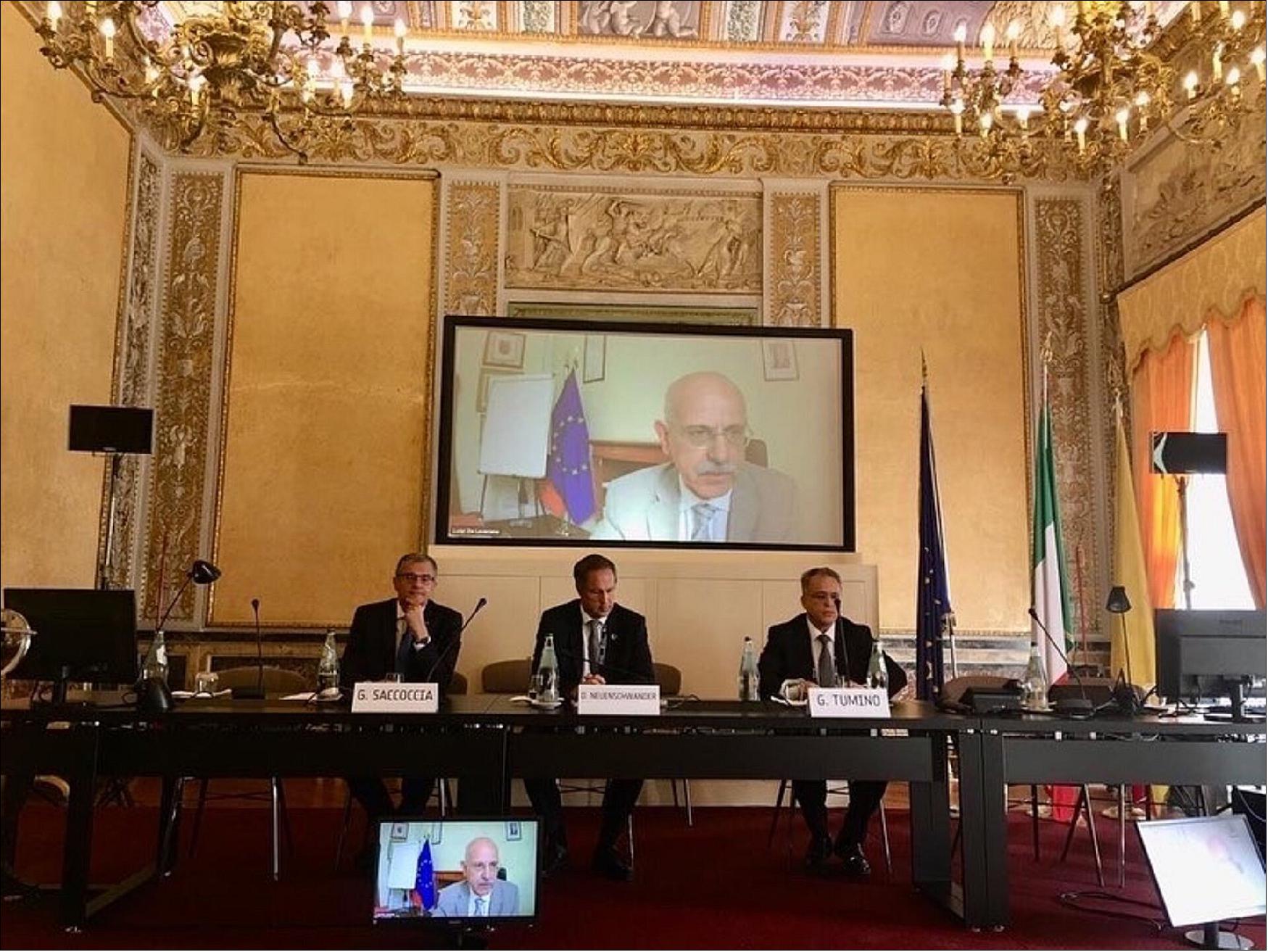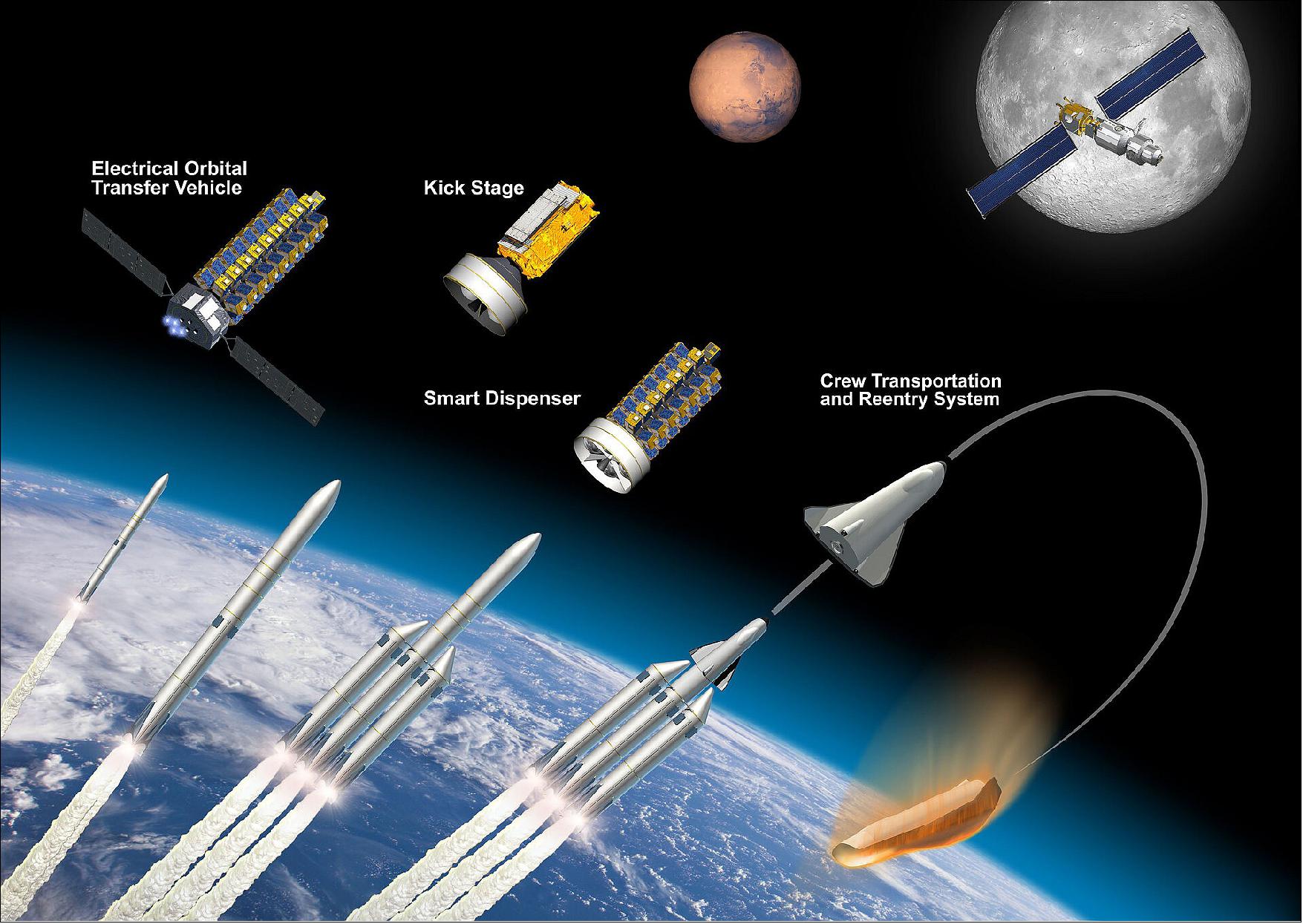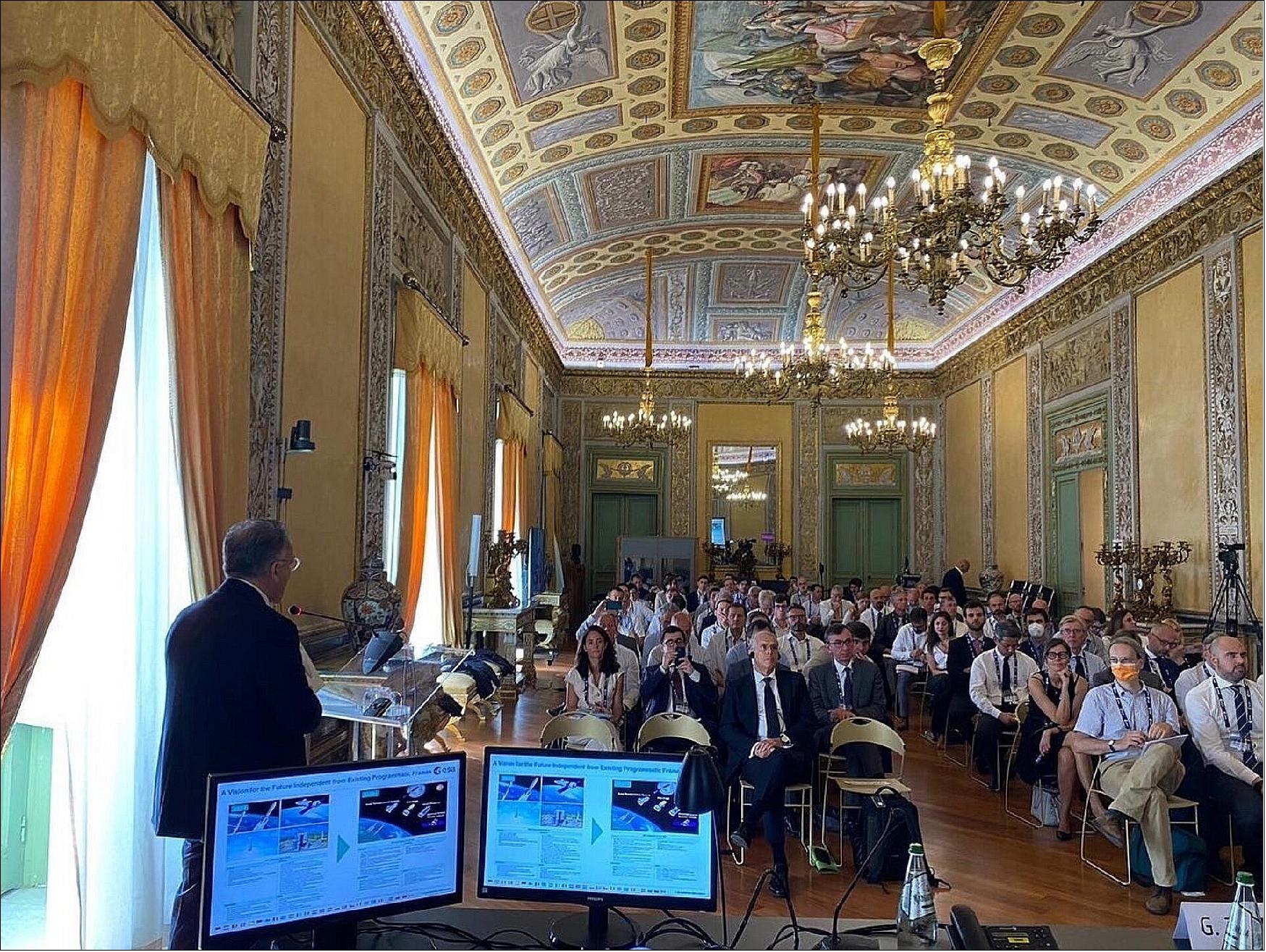Shared Vision
People and News
Shared Vision for the Future of Space Transportation in Europe
July 2022: How can Europe exploit its technical, industrial and financial strengths to ensure it remains a leader in space transportation in the 2030s and beyond? How can ESA, Europe’s national space agencies and institutions, and both established and new industrial partners better co-ordinate their efforts to meet global competition that demands innovation and cost-reduction? 1)
These were just a few of the questions discussed during an ESA-hosted roundtable conference held on 27-28 June in Palermo, Sicily. The event, called “Shared Vision for the Future of Space Transportation in Europe”, saw more than 100 representatives of Europe’s space sector discuss the technical and political challenges shaping the space transportation market.
The Palermo roundtable meeting was held to begin fleshing out this “Vision 2030+” of a European space sector organized to meet the technical and market demands of the coming decades. Said Tumino: “The event was extremely fruitful. It underlined the need to consolidate a European vision that brings together all actors.”
Several themes shaped the discussion, which reflected the differing needs of established space industry players and their start-up competitors. One theme was the role of ESA; should it lead definition and product development of European institutional launchers, or should it support industry’s entrepreneurial efforts to define and develop products?
Participants underlined that ESA should act as an “anchor customer”; that is, to shift its focus towards services. But while some favour such a shift away from buying specific technologies or creating products, others want ESA to continue to play a more product-focused role. That is, to use its technical and financial strength to actively “de-risk” technologies which are expected to become critical enablers of institutional requirements but which cannot enter the market quickly.
Another concern focused on the limited size of the European launch market. Some participants fear too much intra-European competition risks impoverishing the installed infrastructure and expertise which has been built up over by agencies and industry.
Here, one theme arising from the Palermo meeting was that ESA should trigger more commercial investment by initiating “competitive procurements” in new activities.
This theme of balancing co-operation and competition characterised discussion of one possible strategy, which is to identify common technology “building blocks”. This proposal would see commonly available technologies shared across many applications to generate the economies of scale which keep costs down in larger institutional markets.
Palermo revealed that prime contractors and legacy companies support this approach, agreeing that sharing technologies would build volume and enhance international competitiveness. Newer companies, however, expressed concern that this approach risked creating monopolies; they prefer to mimic the so-called “spin-in” tactic of borrowing technologies that have been developed by larger industries, such as automotive.
Broadly, participants agreed that building blocks were not needed for lighter sub-systems, where vertical integration fosters competition and stimulates innovation.

The topic of European competence in human space exploration was widely discussed. Here, participants saw a necessity in mastering the technologies that enable the sustainment of human life in very difficult conditions.
Some participants observed that the lead time in developing human spaceflight capabilities means decisions about its pursuit need to be taken now.

One point of agreement was that Europe offers very high-quality space transportation services. Europe, it was noted, delivers outstanding launch services from its spaceport in French Guiana, with many international customers coming back repeatedly owing to quality and reliability.

Daniel Neuenschwander, ESA’s Director of Space Transportation, called the event in Palermo a key milestone: “We have an ambitious transformation plan and the Spirit of Palermo will support that. Europe is building on a solid foundation, technically and commercially, and Europe is adapting to a fast-changing space market so it’s encouraging to see such intense engagement – and readiness to accelerate.
References
1) ”To Sicily and beyond: ESA, partners debate future of space transportation,” ESA Enabling & Support, 11 July 2022, URL: https://www.esa.int/Enabling_Support/Space_Transportation/To_Sicily_and_beyond_ESA_partners_debate_future_of_space_transportation
The information compiled and edited in this article was provided by Herbert J. Kramer from his documentation of: ”Observation of the Earth and Its Environment: Survey of Missions and Sensors” (Springer Verlag) as well as many other sources after the publication of the 4th edition in 2002. - Comments and corrections to this article are always welcome for further updates (eoportal@symbios.space).